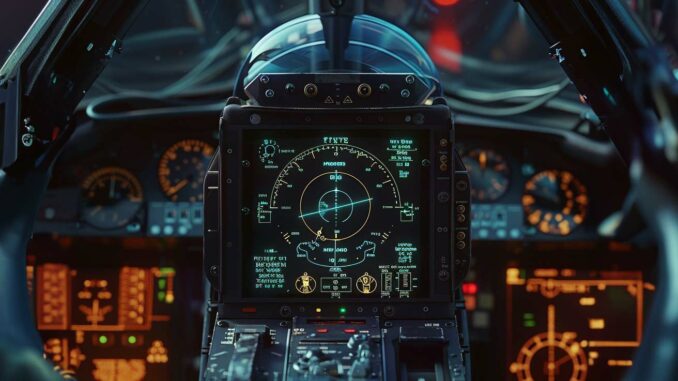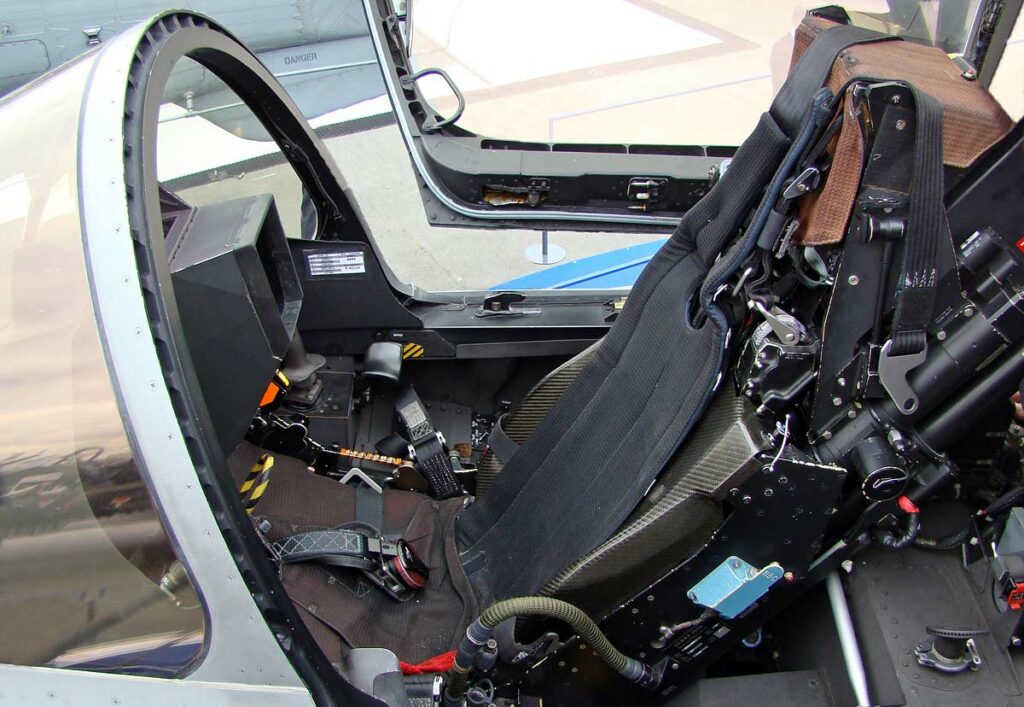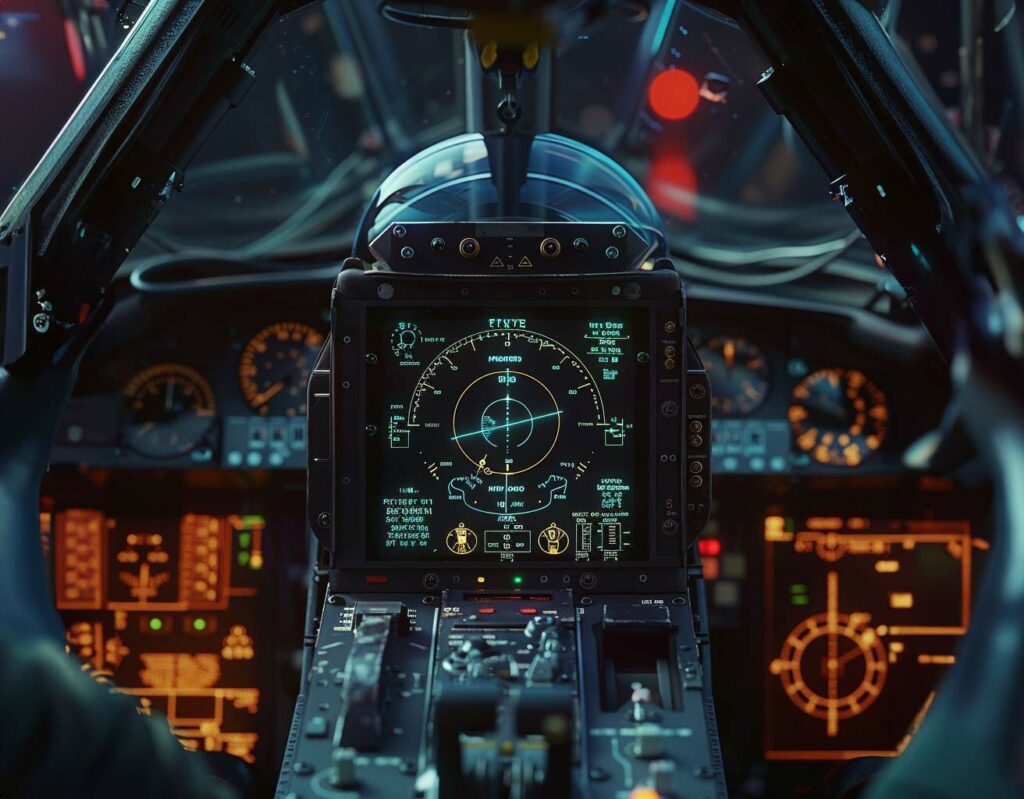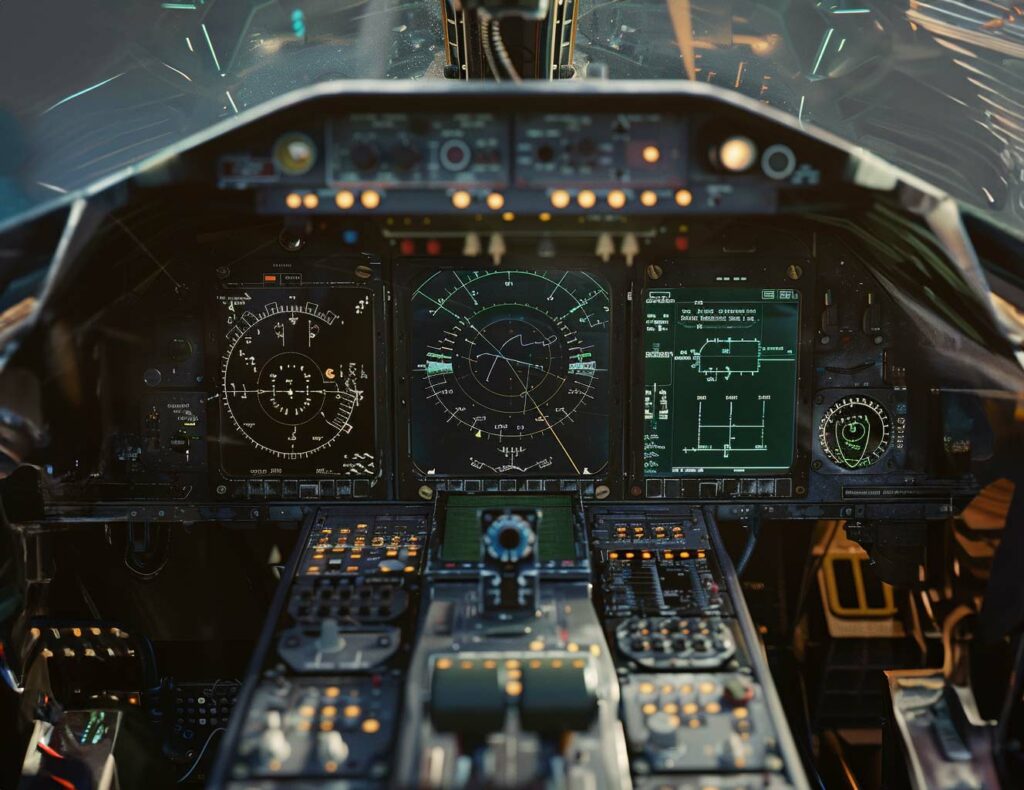
Explore the technical and scientific operation of fighter aircraft radars, essential for detecting and tracking targets in flight.
Radars play a vital role in the surveillance, detection, target tracking and navigation of fighter aircraft. Their use has revolutionized the way air operations are conducted, giving pilots and commands an unprecedented ability to maintain air superiority and carry out missions with greater efficiency and precision.
The history of radar in fighter aviation dates back to the Second World War, when its deployment marked a decisive turning point in air combat tactics. Since then, radar technology has evolved steadily, from bulky, inaccurate systems to highly sophisticated devices capable of detecting targets several hundred kilometers away, while distinguishing potential threats in interference-saturated environments. Advances in miniaturization, signal processing and the integration of digital technologies have enabled modern fighter radars to become more compact, powerful and responsive, paving the way for enhanced capabilities in terms of stealth, electronic countermeasures and electronic warfare.

The basic principles of radar
Radar, an acronym for “Radio Detection and Ranging”, is a technology that uses electromagnetic waves to detect, locate and track distant objects, and sometimes identify their characteristics. Basically, it works by emitting radio waves that bounce off objects and return to the point of origin, where the data is analyzed to determine the distance, speed and sometimes the shape of the object detected.
Explanation of electromagnetic waves and their use in object detection
Electromagnetic waves are at the heart of radar operation. When a radar emits these waves, they propagate through the environment until they encounter an object. Part of the wave’s energy is reflected by the object and returned to the source. By measuring the time elapsed between emission of the wave and reception of the echo, as well as the change in frequency of the returned wave due to the Doppler effect, the radar can calculate the distance, speed and direction of the object. The wavelength and frequency of the waves emitted vary according to the type of radar and the intended application, influencing the system’s resolution and range.
The difference between passive and active radar
The main distinction between active and passive radar lies in the way they detect and process information about objects.
Active radar
Active radar generates and transmits its own signals in the form of electromagnetic waves. After being reflected by an object, these signals return to the radar, where they are interpreted to determine the object’s characteristics. Active radars are able to provide precise data on the position, speed and sometimes the shape of the object, but they can be detected by the enemy due to their signal emission.
Passive radar
Unlike active radar, passive radar does not produce its own signals. Instead, it uses signals emitted by other sources, such as TV stations, satellites or radio transmissions. Passive radar detects objects by analyzing how these ambient signals are modified as they bounce off objects. Although generally less accurate than active systems in terms of location and tracking, passive radars have the major advantage of being virtually undetectable, as they emit no signals that might reveal their presence.
Key components of a fighter jet radar
Fighter radar is a complex system designed for detection, target tracking, and sometimes navigation and fire control. It is based on four main components, whose interaction ensures optimal system operation.
Transmitter description: radar wave generation
The transmitter is the heart of the radar system, responsible for generating electromagnetic waves. These waves are then emitted into the environment to detect targets. The transmitter uses an oscillator to create an electrical signal at a specific frequency, which is then amplified to increase its power. The power and frequency of the emitted signal determine the radar’s range and resolution. In modern fighter aircraft, transmitters are capable of generating signals at extremely high power levels, enabling targets to be detected at long distances, even in adverse weather conditions.
The role of the antenna: transmitting and receiving waves
The radar antenna plays two essential roles: it transmits radar waves into the environment, and it picks up echoes reflected by objects. Antenna characteristics, such as size, shape and orientation, directly influence the radar’s directivity and range. Active Electronically Scanned Array (AESA) antennas are an advanced example used in modern fighter aircraft radars, offering increased flexibility in scanning the search area without requiring physical movement of the antenna.
The receiver: processing received signals
Once radar waves have been reflected by a target and picked up by the antenna, they are transmitted to the receiver. The role of the receiver is to convert these radar echoes into electrical signals that can be analyzed. The receiver also filters out background noise and amplifies the signal to facilitate further processing. Receiver sensitivity is crucial for the detection of weakly reflective or distant targets.
Signal processor: data analysis and interpretation
The signal processor is the unit that analyzes and interprets the data received from the receiver. It uses complex algorithms to distinguish targets from interference and background noise, and to determine the position, speed and sometimes classification of detected objects. Signal processing is also used to track target movements and predict trajectories. In advanced radar systems, the processor can simultaneously manage several targets and provide real-time information to the pilot or the aircraft’s weapons system.

Types of radar used in fighter aircraft
Radars are indispensable tools for fighter aircraft, providing essential target detection, tracking and engagement capabilities. Two main types of radar are commonly used in modern fighter aircraft: pulse radar and active electronically scanned array (AESA) radar. Each has unique characteristics that make it suitable for specific applications.
Pulse radar: operation and applications
Pulse radar works by emitting short bursts of radio energy, or pulses, and then listening for the echoes of these pulses as they bounce off distant objects. The distance to the target is determined by measuring the time elapsed between emission of the pulse and reception of the echo. This type of radar is particularly useful for measuring precise distances, and is capable of detecting long-range targets. However, its ability to track targets at high speed or operate at high frequencies may be limited by the time required for the pulses to travel back and forth.
Electronically scanned array radar (AESA): benefits and features
AESA radar, a significant advance on pulse radar, uses multiple solid-state transceiver modules, each of which can be independently controlled to transmit radio wave beams in multiple directions simultaneously. This capability enables AESA radar to survey a wide area, track multiple targets and engage selected targets with high accuracy, while remaining stealthy to enemy sensors. AESA systems offer greater resolution, reliability and flexibility than pulse radars, making them particularly well suited to modern air combat missions.
Performance comparison: AESA vs. pulse radar
A comparison between AESA and pulse radars reveals several key differences in terms of performance. AESA radars outperform pulse systems in terms of stealth, resistance to electronic countermeasures, multitasking capability and detection range. Their ability to scan several sectors of airspace simultaneously enables them to detect and track multiple targets, while guiding weapons to these targets, offering significant air superiority.
However, pulse radar remains relevant for specific applications where simplicity and long-range detection capability are a priority. Pulse systems are also less expensive to produce and maintain than AESA radars, making them attractive for limited budgets.
How radar works on a mission
Radar plays critical roles in airborne missions, from simple object detection to complex target tracking and electronic countermeasure management. This essential technology enables fighter jets to navigate the battle skies with formidable efficiency, identifying potential threats long before they are within visual range.
Target detection and tracking: how radar identifies and tracks targets
Radar identifies and tracks targets by emitting electromagnetic waves which, on encountering an object, are reflected back to the radar. This return, or echo, is analyzed to determine the distance, altitude, speed and sometimes even the type of object detected. Thanks to precise calculations based on the return time of the echo and the Doppler shift (a change in the frequency of the wave caused by the movement of the object), the radar can track the trajectory of a target with remarkable accuracy. This capability is crucial for air combat missions, where rapid, accurate detection of enemy targets can determine the outcome of a confrontation.
Electronic Countermeasures and Interference Management (ECM)
Modern warfare involves an electromagnetically saturated environment, where interference and electronic countermeasures (ECM) can compromise radar effectiveness. ECMs are tactics or technologies designed to jam, deceive or otherwise interfere with radar operation, making it more difficult to detect and track targets. To counter these threats, modern radars incorporate electronic warfare capabilities, such as resistance to jamming, identification of decoy attempts, and use of variable frequencies to avoid interception. In addition, advanced algorithms can analyze and filter incoming signals to distinguish real targets from decoys.
The role of stealth and how it affects radar detection
Stealth is an increasingly common design feature in modern military aircraft, aimed at reducing their visibility to enemy radars. Stealth technologies, such as radar-absorbing materials, optimized fuselage shapes and heat signature management techniques, reduce the amount of radar energy reflected back to the source, making the aircraft more difficult to detect. This capability has a significant impact on radar operation on mission, as it forces operators to rely on higher frequencies, which are less affected by stealth techniques, or to integrate additional sensors for passive detection. Continued advances in stealth technology and countermeasures require a parallel evolution of radar systems to maintain operational effectiveness in the modern combat sky.

Practical applications and engagement strategies
Radars play an indispensable role in the operational efficiency of fighter aircraft, providing them with the tools they need to execute critical missions with precision. Their application goes far beyond simple target detection, directly influencing engagement strategies and mission success.
Using radar to guide missiles and bombs
Modern radar systems not only detect and track targets, they are also essential for the precise guidance of missiles and bombs. Active Electronically Scanned Array (AESA) radars, for example, can simultaneously track multiple targets and direct weapons at them, enabling fighter jets to engage enemy targets while remaining at a safe distance. This capability is crucial in combat environments where the threat from enemy air defense is significant. Radar ensures that each guided missile or bomb hits its target with maximum accuracy, reducing the need for ammunition and minimizing collateral damage.
Air combat strategies based on radar capabilities
Air combat strategies are profoundly influenced by the radar capabilities of fighter aircraft. Pilots use the information provided by radar to make tactical decisions, such as engaging or avoiding enemy targets, choosing altitude and position to optimize radar effectiveness, and minimizing visibility to the enemy. For example, Beyond Visual Range (BVR) tactics enable pilots to engage targets well before they are visually detectable, thanks to the superior range and accuracy of modern radar systems. These strategies significantly increase the chances of mission success, while reducing the risk to both pilot and aircraft.
Real-life examples of engagements and missions where radar has played a key role
Numerous conflicts and missions in recent history have demonstrated the vital importance of radar in military aviation. A notable example is Operation Desert Storm in 1991, where fighter aircraft equipped with advanced radars played a crucial role in dominating the air and neutralizing enemy air defenses. More recently, the F-22 and F-35’s AESA radars have enabled these aircraft to carry out surveillance, reconnaissance and attack missions in highly contested airspace, proving the effectiveness of strategies based on advanced radar technologies.
Future challenges and developments
In military aviation, radar systems are the cornerstone of air combat capability, providing essential data for surveillance, detection and target engagement. However, despite their advances, these systems face significant challenges, stimulating research and the development of new innovations.
Current limitations of fighter radars
Fighter radars, though extremely advanced, face several limitations inherent to their technology. Enemy target stealth, using materials and shapes designed to absorb or deflect radar waves, considerably reduces the effectiveness of traditional radar systems. In addition, electronic countermeasures (ECM) can confuse or mislead radars, making it difficult to distinguish between real targets and decoys. The limited range and resolution of radar against small or low-altitude objects are also persistent challenges, requiring ongoing improvements.
Current innovations and future prospects for radar systems
To overcome these limitations, significant innovations are underway in radar systems. The integration of Active Electronically Scanned Array (AESA) radars into modern fighter aircraft has already marked significant progress, offering better resolution, greater range and increased resistance to ECM. Current research is focusing on improving radar stealth, reducing their electronic signature to make them less detectable by the enemy.
The development of quantum wave radars promises a revolution in the detection of stealth targets, by exploiting the properties of quantum particles to identify objects independently of their ability to avoid traditional radar detection. In addition, the integration of multi-static radar systems, where several transmitters and receivers are used in a network, could overcome range limitations and increase target location accuracy.
The impact of artificial intelligence and drone technology on future radar systems
Artificial intelligence (AI) is poised to transform radar systems by improving their ability to rapidly and accurately analyze the vast quantities of data collected. AI can help distinguish real targets from decoys, predict target movements and automatically optimize radar parameters for different mission conditions.
Drone technology, meanwhile, extends radar applications by enabling the deployment of advanced airborne radar systems. These drones can operate in high-risk areas, providing real-time data without endangering human crews. In addition, the use of swarm drones, equipped with interconnected radars, could offer an unprecedented overview of the battlefield, greatly enhancing situational awareness and decision-making capability.
War Wings Daily is an independant magazine.